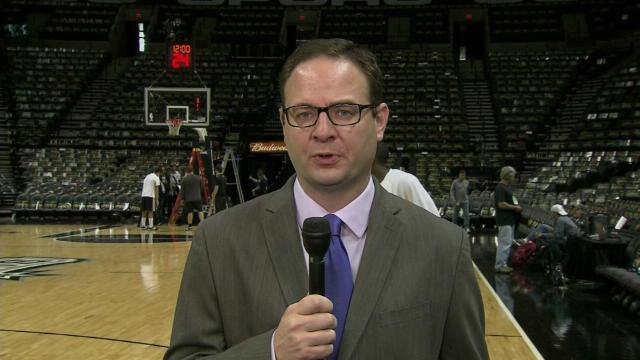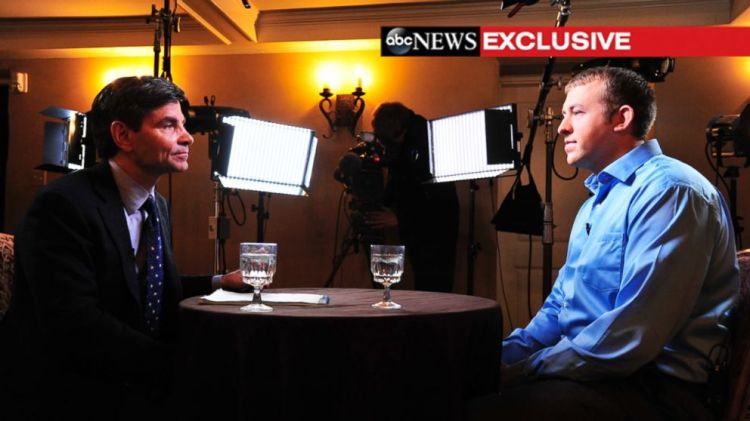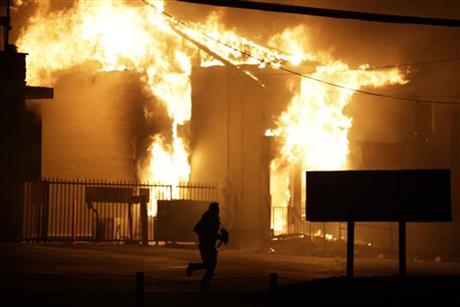Reporters always want the scoop – the exclusive story you secured through hours of reporting, working the phones and gaining trust of sources. But just as important as getting the scoop is making sure how you get it is done in the right way.
Journalists have to tread a fine line. They need to be polite and gain the trust of people, without being a source’s friend. But they also need to find ways to be objective and critical without being someone’s enemy. And in today’s PR-obsessed world, it can be hard for reporters to get scoops without undermining their ethics and credibility. Sources no longer share their stories with reporters who have a solid track record, they are looking for reporters who won’t ask tough questions, reporters who will put the right PR spin on things, reporters who will make them look good.
Last month, reporters met secretly with Darren Wilson, making their pitch as to why they should be allowed to help share Wilson’s side of the story about what happened in the shooting of Michael Brown. The police officer had his pick of reporters, from ABC to CNN to CBS. In the end, Wilson chose ABC’s George Stephanopoulos. But why? ABC never explained to its viewers what Stephanopoulos said to Wilson to land the interview, and Wilson never explained either. But we can guess – do you think someone in Wilson’s position wanted a tough-as-nails reporter who would go after him about the facts? Or did he want a sympathetic ear?
No reporter likes to share the tricks of the trade. They want to keep their advantage over the rest of the pack. It’s just good business. But that also assumes that reporters are doing their jobs right: gathering facts, asking tough questions, and staying true to their ethics. Viewers assume that if someone wanted to share their story under specific terms or agreements, that the reporter would ethically choose to decline. So the process of how you get your scoop becomes just as important to your readers and viewers, to ensure that they can trust the information you provide is honest.
That’s become even harder in sports journalism, as the line between reporter and columnist is blurred. In a perfect world, reporters gather facts and columnists present their opinion. But these days, those columnists are breaking stories alongside their positive or negative opinion pieces. Writers are being asked to wear two hats, and we see it everywhere, from Sports Illustrated to Deadspin to ESPN to Yahoo. I don’t agree with it. I’ve heard arguments from sportswriters that people get their news differently now; that there aren’t the traditional definitions of “reporters” vs “columnists” vs “bloggers” anymore. But I think that approach comes at the cost of our ethics.
To keep things honest, there needs to be a clear line. And when the line continues to be smudged, it’s hard to know how certain scoops came to be.

Yahoo’s Adrian Wojnarowski is typically credited as one of the best NBA writers, but his methods of getting scoops are dubious.
I had previously been a fan of Yahoo Sports’ NBA writer Adrian Wojnarowski. The guy had every scoop, every detail, every trade, every draft pick, sometimes before they were officially announced. I thought, “this is a reporter who knows how to do his job.” He kicked ass, frankly.
But there was always that line that Woj seemed to straddle. He would break stories on Twitter, but he would also give some scathing criticisms or heap praises upon players, coaches, general managers, and agents. Now, a huge takedown by Kevin Draper in the New Republic reveals the methods to Woj’s scoops, and how he used his position as a columnist to get information.
For example: Wojnarowski seemed to have every scoop on the Detroit Pistons over the last few years, from coaching decisions to trades and free agents. But during that time, even as the once-mighty Pistons fell into the cellar of the Eastern Conference, he never wrote a single negative column about the team. As Draper points out: “Instead, Wojnarowski penned several sympathetic profiles of [Pistons GM Joe] Dumars, including ones that covered his completion of his college degree and another wholly about his defensive skills as a player in the 1980s.”
And when Woj didn’t get the scoop? Then he used his column to criticize and attack players and personnel. Whereas other reporters work hard to gain the trust of sources in order to break news, Wojnarowski uses his column to shift public perception about players. Woj has more than 800,000 followers on Twitter, and a column from him can make or break someone’s reputation. As a result, he mixes his reporting with his opinion, and bullies his way into breaking stories.
Then came the hammer: Draper writes about how the NBA figured out that it was Joe Dumars who was leaking the information to Woj:
In 2010, the NBA fined Dumars $500,000 for leaking multiple confidential league memos to Wojnarowski, according to multiple sources. This matches the third largest publicly known fine the league has ever handed down. The NBA decided that too many memos were making it into the media, so they conducted a sting operation over several months. They would change a few words or numbers in different team’s copies of otherwise identical memos, so that when the memos leaked they could spot the small differences and trace them back to the leaker. This approach caught Dumars red-handed, as well as an executive from another team who was fined $12,500 for leaking to a draft-focused website.
Go read the whole piece over at the New Republic, because it’s an enlightening look at the dubious methods being used by someone who had been hailed as one of the NBA’s top reporters. It will make you take a closer look at what you are reading, and hopefully, you’ll start to question how a reporter got their info in the first place.


